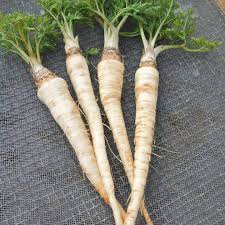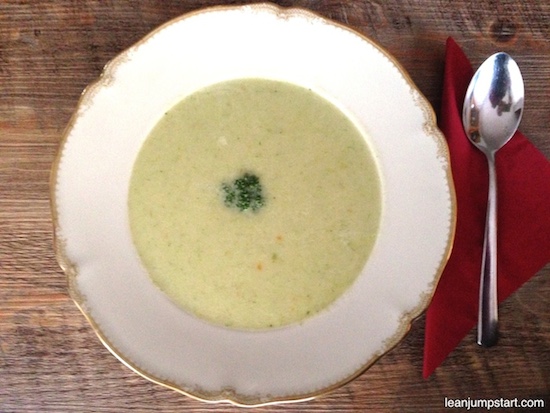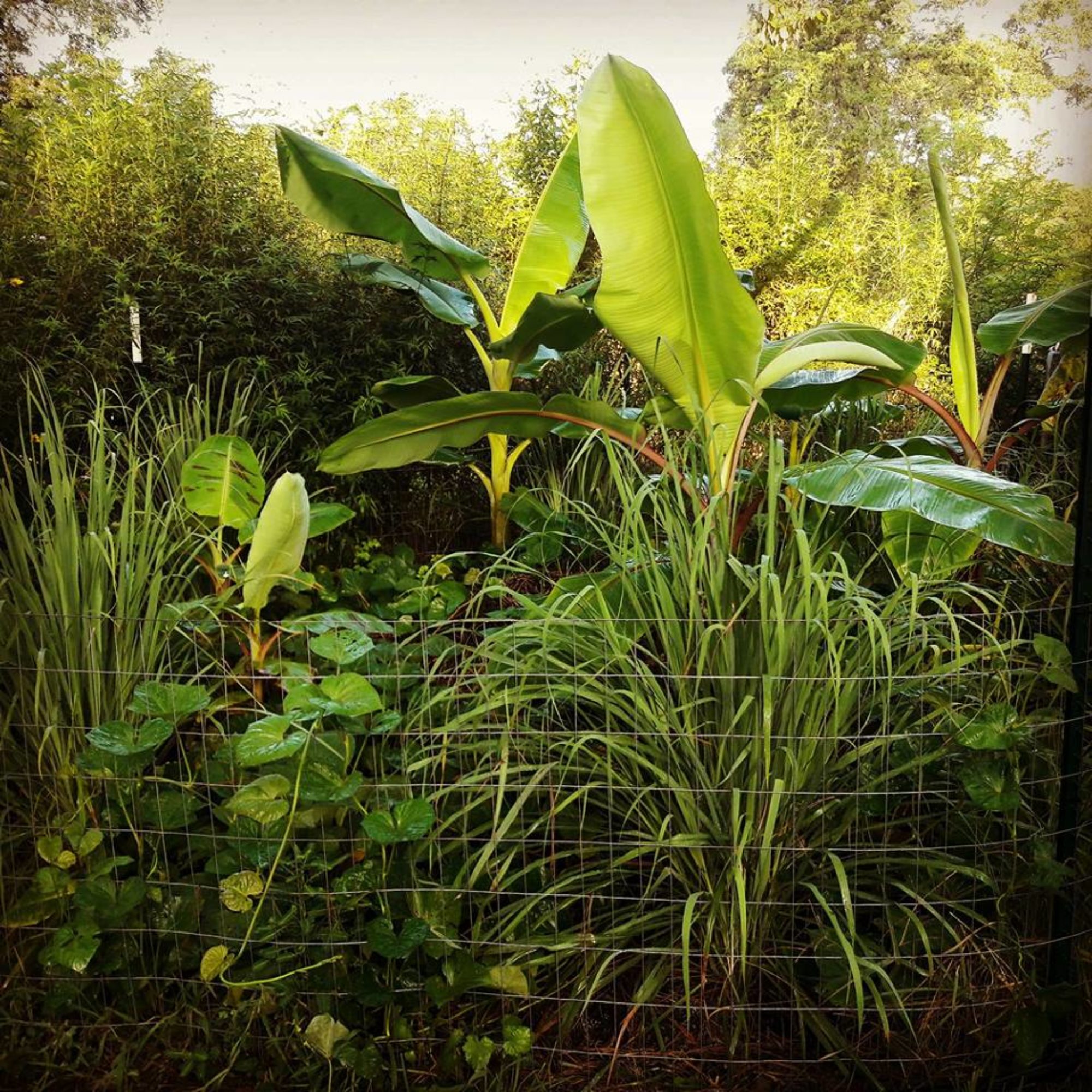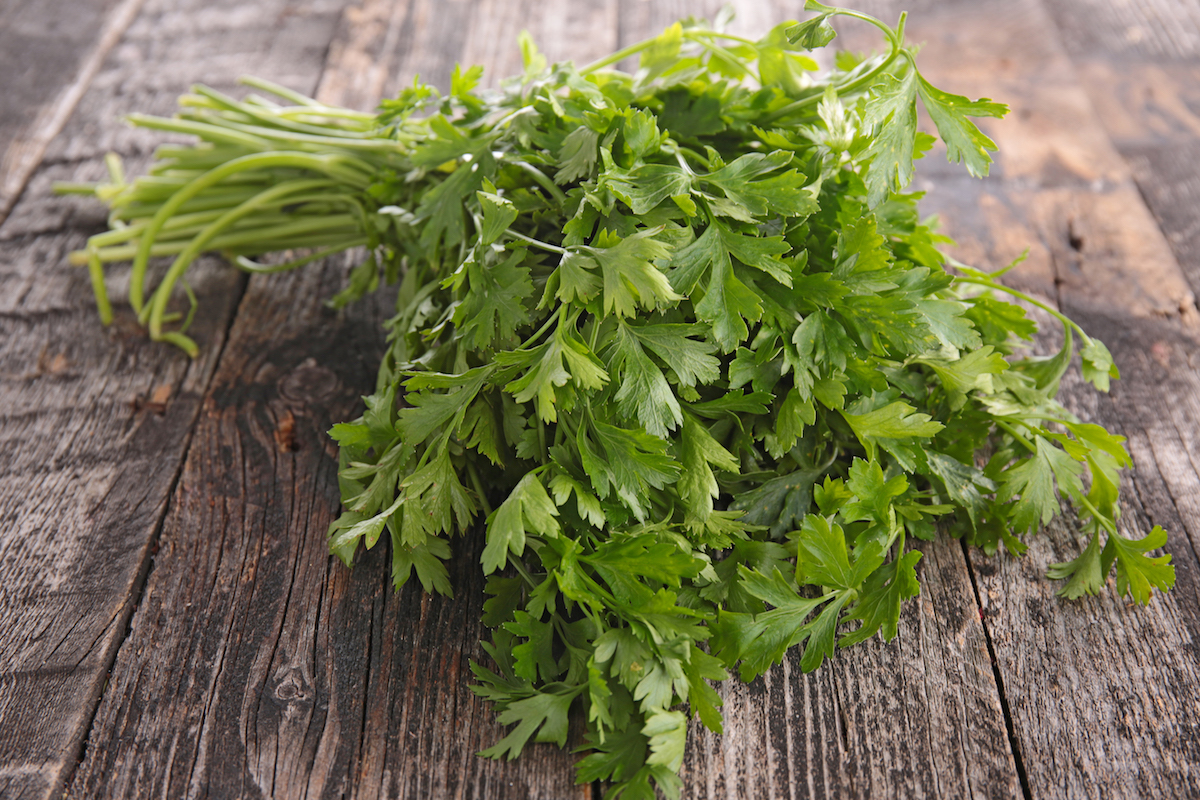Intro
Parsley is the most popular herb in the world and makes a fantastic addition to the edible landscape! Its name literally means celery from the rock, coming from ancient words with those meanings. It was discovered centuries ago and is Mediterranean in nature but has naturalized in almost every climate. It is part of the celery family.
It was mainly used as a garnish in the US, even though it is usually the most nutritious food on the plate!
Types of Parsley
There are 2 main types of parsley and 1 lesser known.
- Cruspum – Curly leaf, which has creased, curly leaves
- Neopolitan – Flat leaf, or Italian parsley.
- Tuberosum – Grown for their parsnip-like roots which have a delicious and nutty flavor, reminiscent of both celery and parsley. These tops can also be eaten.

Curly leaf is the most common in America whereas flat leaf parsley is the most common in the rest of the world.
Uses in Medicine
When designing and planting an edible landscape, we like to use plants that provide multi-functions. This is a permaculture term called function stacking, where we get many uses from a single element. Many plants are medicinal in nature and therefore useful in the edible landscape.
Herbal Actions: (for more on herbal actions, see my primer here)
- Anti-inflammatory
- Antioxidant
- Carminative
- Diuretic
- Digestive Aid
- Emmenagogue
- Nutritive
- Uterine Stimulant
Used for:
- Kidney Stones
- Urinary Tract Infections
- Cracked or Chapped Skin
- Bruises
- Tumors
- Insect Bites
- Digestive Problems
- Menstrual Problems
- Liver Disorders
- Asthma
- Cough
- Fluid Retention & Swelling (edema)
- Gastrointestinal Disorders
- Constipation
- Jaundice
- Flatulence
- Indigestion
- Colic
- Diabetes
- Osteoarthritis
- Anemia
- High Blood Pressure
- Prostate Conditions
- Spleen Conditions
- Lice treatment
- Parasite removal
- Stimulate Hair Growth
- Aphrodisiac
- Breath Freshener
In fact, the reason it is usually used as a garnish dates back to old. The Romans believed it was so effective as a breath freshener, it would even overcome the smell of garlic!
Recipe!
Due to the overwhelming culinary use of parsley greens worldwide, I am going to give you recipe that utilizes the roots, rather than the greens as many people are unaware the root is even usable.
The first time we pulled parsley out of our garden was when my wife, Angela, pulled it in early winter to make tinctures. When I saw the root, I thought it must be in the carrot family due to the shape and texture of the roots. Turns out, the root is edible, medicinal, nutritious and delicious.
Below is a recipe I found on LeanJumpStart.com and I can’t wait to try it myself. We’ve made something very similar but the addition of parsley root into this should be absolutely amazing!

11 oz. parsley roots in small chunks
7 oz. potatoes in small cubes
7 oz. leeks in small chunks
35 oz. vegetable broth
11 oz. milk
1 tablespoon olive oil
some nutmeg, freshly ground
some parsley, hacked
salt, pepper
- Heat oil in a large saucepan.
- Add leeks and fry for two minutes.
- Add parsley root chunks and potato cubes and let it steam for another minute.
- Pour vegetable broth into the saucepan and let it come to a boil.
- Reduce heat to simmer.
- Cover and cook for 20 minutes or until the potatoes are soft.
- Remove from heat.
- Stir in milk and blend with a hand mixer.
- Season with nutmeg, salt and pepper.
- Let it simmer again at low heat for three minutes (but do not boil).
- Garnish with some parsley greens.
Uses in the Landscape
Parsley has amazing uses in the garden, not just the kitchen or farmacy. Parsley repels some beetles due to the smell and attracts beneficial insects in its second year when it goes to flower. Swallowtail butterflies lay their eggs on the leaves. The flowers attract hoverflies, whose larvae eat aphids, thrips and other harmful insects.
Companions of parsley are:
- Tomatoes
- Chives
- Carrots
- Corn
- Peppers
- Onions
- Peas
- One of the most interesting companions to parsley is roses. Planting roses around the base of the roses will actually make them smell sweeter!
Do NOT plant lettuce or mint around parsley as these are not good companions.
How to Grow Parsley at Home!
Parsley is easy to grow and adapts well to most any climate but it does like well-drained soil.
Planting in the Edible Landscape
Germination can be difficult so it usually recommended buying plants in the spring. However, we have always started ours from seed with no issues. For better germination, soak the seeds overnight before sowing. It could take anywhere from 10-25 days before germination occurs so be patient.
Once the plant is germinated, wait until after the last frost to plant in the garden and do not plant on Good Friday, as it was once believed this would lead to a curse on the family. It was also considered bad luck to transplant parsley, so make sure you are planting in its final resting place. Speaking of final resting place, it was also believed that transplanting parsley from someone else’s garden to your own would lead to the death of a family member is the transplanted household. While I don’t hold value to these claims, it’s interesting nonetheless and is enough to encourage me to sow directly from seed once the danger of frost has passed.
Care
Try to keep the soil moist, but being a Mediterranean herb, it can tolerate drought once established so if planting in an herb spiral, I recommend the second tier and in a partly shady location as it prefers part shade, especially mid-day.
Harvest
Harvest as needed but preferably in the early morning for a sweeter product, although, we harvest just as needed and love the flavor even after a hot summer day. Leave quite a few plants to overwinter as it is frost tolerant and the roots can be harvested as needed for food or medicine and you also want some second-year plants in the garden for the flowers to attract the beneficial insects as listed above.
Post Harvest – Curing & Storage
We usually use parsley fresh but you can dry it to use as a dried herb. Dry in a shady, breezy location or a dehydrator on the lowest setting or in the oven with the light on and the door cracked.
Roots can be stored in the fridge for later use or made into tinctures for stored medicine.
What is your experience with parsley? Let us know in the comments below!
[TheChamp-FB-Comments]

